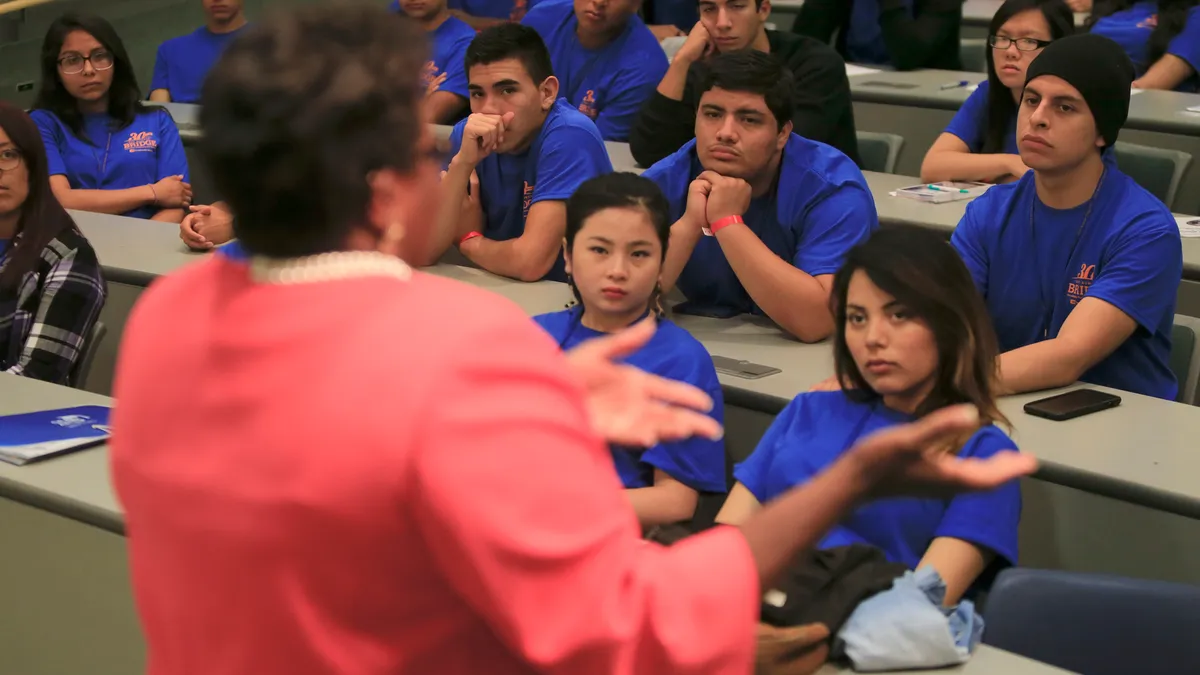Children of immigrants are the fastest-growing segment of the U.S. child population, and a substantial portion of these students have ties to Latin America or Asia. But a new report from the National Academies of Sciences, Engineering and Medicine highlights the diversity within the English-learner population.
Even among students from Latin America, there are national and regional variations in Spanish vocabulary, as well as the presence of indigenous languages that can make English a third language rather than a second. China, alone, has hundreds of dialects, and Cantonese and Mandarin are two very different languages that show up among U.S. immigrants.
Educating English-learners who speak the most common languages can be a challenge, and that challenge gets even harder for schools serving small immigrant populations and new arrivals.
California, Texas, New Mexico, Florida, Illinois and New York have been destinations for immigrants for decades, and all of these states have built up an infrastructure for serving large immigrant populations. There are more than a dozen states, however, in which the percent change in the Latino population was greater than 100% from 2000 to 2012. The southeast region, almost as a whole, has had to adapt to a large increase in this particular immigrant population, and schools are one of the key public institutions serving these families.
Still, it is important to remember there are English-learners in every single state. And every state, therefore, has a responsibility to adequately serve English-learners.
The report, “Promoting the Educational Success of Children and Youth Learning English: Promising Futures” outlines research-based best practices and makes recommendations for policy makers, educators and researchers. Prepared by members of the National Academies’ Committee on Fostering School Success for English Learners, the report covers early childhood, the K-12 space, assessments and special considerations for English-learners with disabilities and those who are gifted and talented, migrant or living on tribal lands.
One good thing about the promising practices highlighted in the report, however, is that educators will find many of them to be familiar. Ruby Takanishi, senior research fellow in the Education Policy Division at New America and chair of the committee, said during a briefing Tuesday that they are associated with effective schools and effective outcomes for students in the general education population, too.
“We need to think about what are effective schools for all children and for children who have the challenge of learning English while learning grade-level academic content,” Takanishi said.
Being bilingual is associated with a range of benefits, including those that are cognitive, social, cultural and economic. Claudio Toppelberg, a psychiatrist and research scientist in the Judge Baker Children’s Center at Harvard Medical School and another member of the report committee, said that while there is no evidence of harm to children of growing up speaking two languages, there is evidence that losing a first language to learn a second can damage a child’s ability to communicate with his or her parents.
Toppelberg said schools and other organizations should promote information about the ability of children to learn two languages and combat common myths about bilingualism. Parents shouldn’t think that speaking to their children in their native language will hurt their chances at success.
“One important take-home message is that strong skills in the home language are the basis for acquiring strong skills in the second language,” Toppelberg said.
Early childhood teachers who serve students speaking languages other than English can encourage that first language with books and music as well as by inviting guests who speak it. Making sure families stay informed about classroom topics can ensure they continue having conversations about it at home in their native language, which can help students.
Schools face serious shortages in the number of qualified bilingual teachers who share the language backgrounds of their students. This needs to be addressed, but as the committee’s report notes, "Not all teachers can teach in all languages, but all teachers can learn specific strategies that support the maintenance of all languages."
Ultimately the report advocates for engaging families, improving early childhood education programs and making stronger connections between the early childhood sector and the K-12 education system, where teachers need better training to adequately serve English-learners. It also lays out a research agenda to fill the gaps in knowledge about English-learners and the factors that influence their achievement.





















